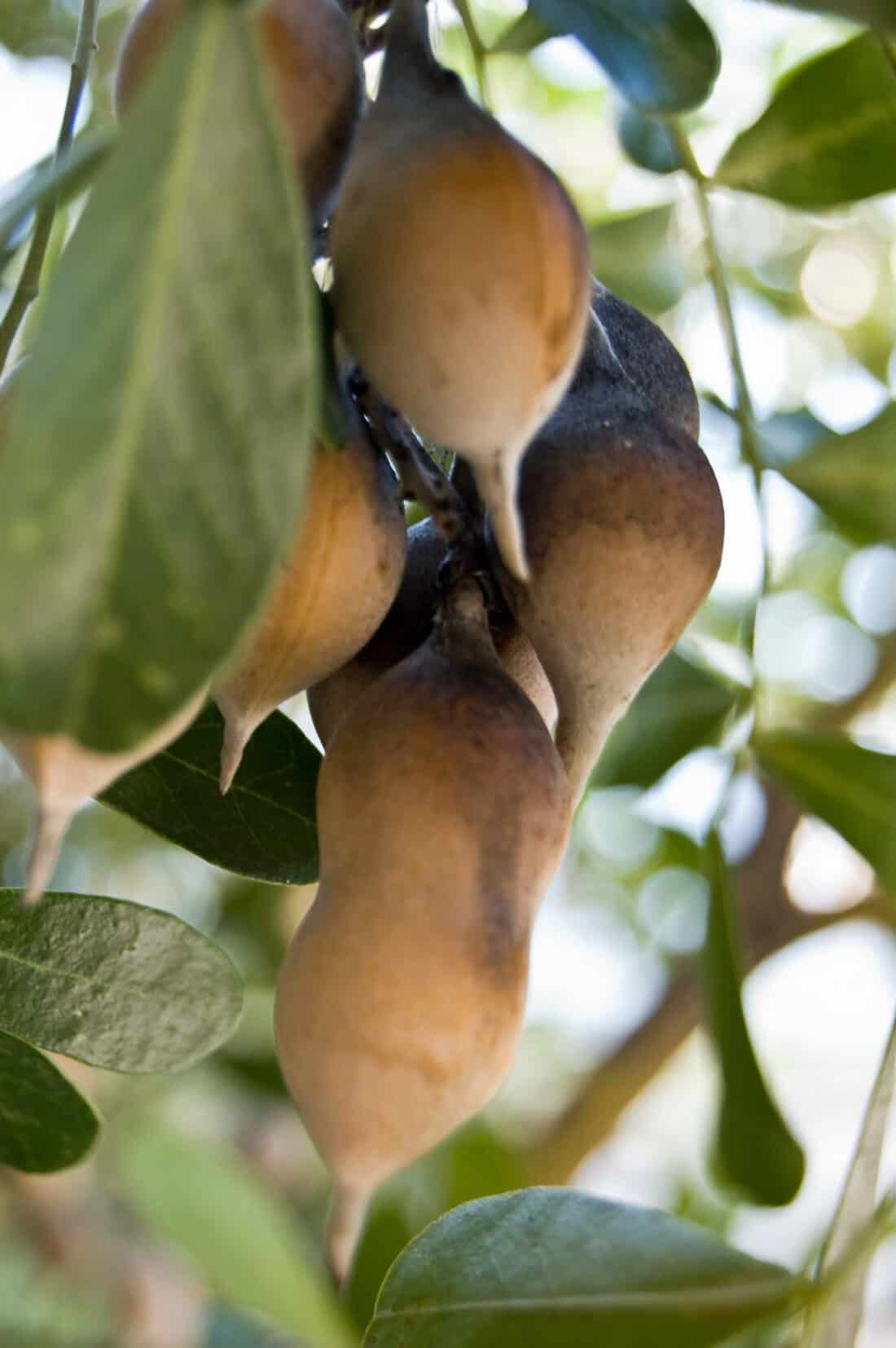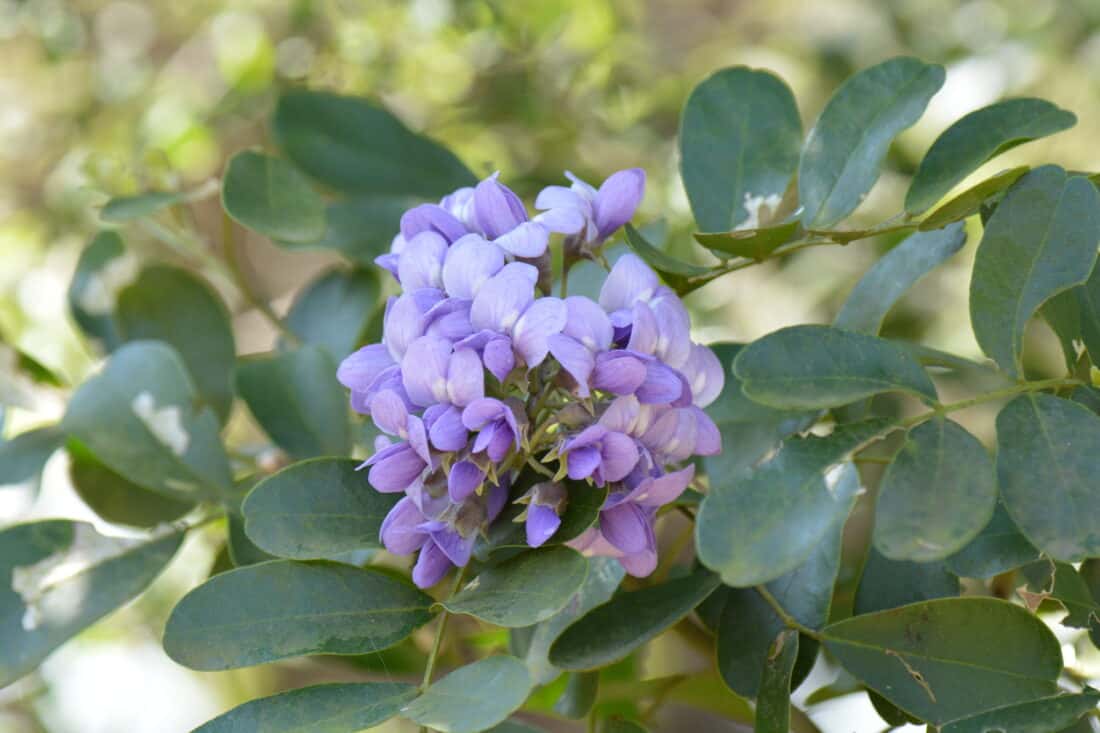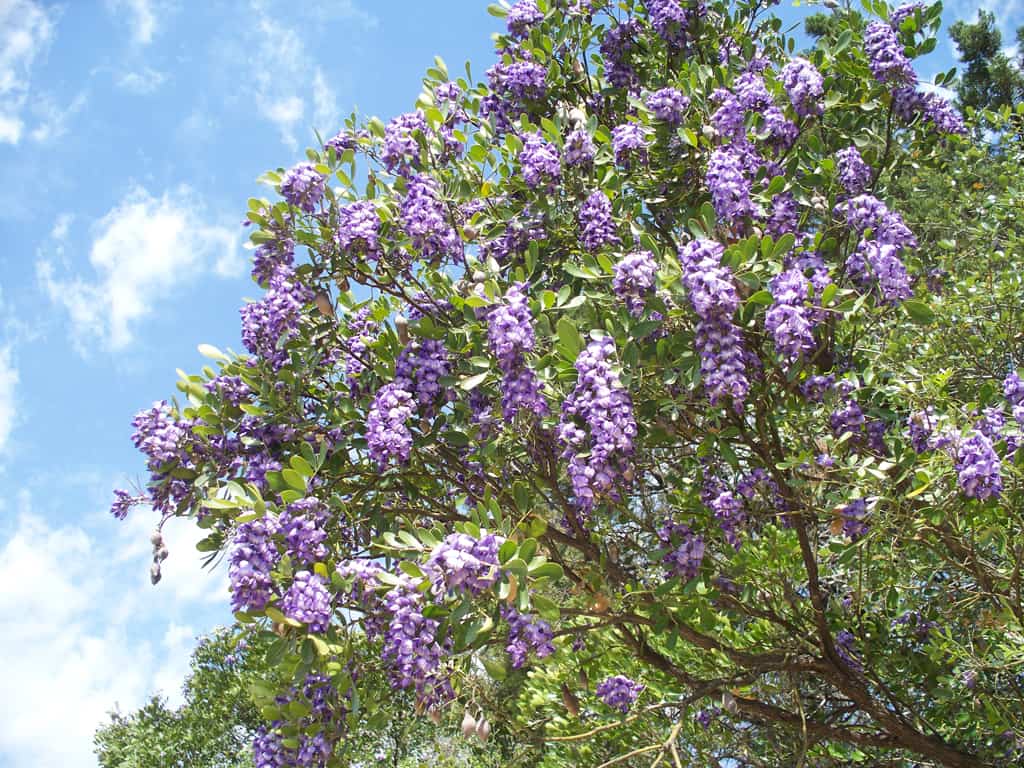I must admit I am quite envious of Texas (and other South Desert states like AZ) gardeners who can grow such a beautiful plant. Texas Mountain Laurel (Sophora secundiflora) is an evergreen with aromatic violet flowers that can be shrubby but lends itself well to pruning into a small tree. Despite sharing a common name (mountain laurel) is not related to


Designing with Sophora secundiflora
Texas Mountain Laurel can be used as a specimen, patio, or street tree and is ideal for a screen, bank cover, or an espalier. It is a beauty in spring when it displays its dense, pendulous clusters of purple/blue, fragrant flowers reminiscent of wisteria.
The hairy seedpods that follow ripen to reveal the inner, bright red seeds. The seeds are quite decorative and have been used to make necklaces, but they are also poisonous.
If using it in a design, try planting a row on 15′ or 20′ centers to form a nice canopy over a walk. The bark on multi-trunked specimens shows off nicely when lit at night from beneath the canopy.

Texas Mountain Laurel (Sophora secundiflora) is a stunning evergreen shrub or small tree native to the southwestern United States, particularly Texas and New Mexico.
Caring for Texax Mountain Laurel
Texas Mountain Laurel thrives in full sun to partial shade, preferring at least 6 hours of direct sunlight daily. Well-draining soil is crucial for this plant to prevent root rot. It can tolerate various soil types, including sandy, loamy, or rocky soils, as long as they are well-drained. Once established, it is drought-tolerant and requires little watering. Water deeply but infrequently, allowing the soil to dry out between waterings.
Prune selectively to shape it or remove dead or damaged branches. Avoid heavy prunin – excessive cutting can lead to reduced flowering. This plant generally doesn’t require fertilization. However, you can apply a balanced fertilizer in spring if growth seems slow or leaves appear pale.
Texas Mountain Laurel is deer-resistant due to its toxic compounds. However, young plants may still be vulnerable, so consider protecting them with fencing or deterrent sprays if deer are prevalent in your area.
Known for its longevity, some specimens live for several decades when provided with proper care.
Companion Plants for Texas Mountain Laurel:
- Salvia greggii (Autumn Sage): This drought-tolerant perennial features aromatic foliage and vibrant flowers, complementing the rugged beauty of Texas Mountain Laurel.
- Agave parryi (Parry’s Agave): Known for its striking rosette form and blue-green leaves, Parry’s Agave adds a sculptural element to the landscape and thrives in similar arid conditions.
- Yucca rostrata (Beaked Yucca): With its dramatic, sword-like foliage and tall flower spikes, Beaked Yucca provides architectural interest and contrasts nicely with the lush foliage of texas mountain-laurel.
- Hesperaloe parviflora (Red Yucca): This tough, drought-tolerant plant boasts grass-like foliage and tall spikes of coral-red flowers, offering a pop of color and texture alongside Texas Mountain Laurel.
- Penstemon digitalis (Foxglove Beardtongue): Featuring spires of tubular flowers atop tall stems, Foxglove Beardtongue adds vertical interest and attracts pollinators to the garden, enhancing the biodiversity around Texas Mountain Laurel.
Thanks for spotlighting this Texas native. Texas mountain laurel in glorious, grape Kool-Aid-scented bloom (aromatic is an understatement; it’s powerful!) sealed the deal on our move to Austin from NC 16 years ago. We visited Austin in mid-February on a house-hunting trip, and that tree, which I’d never encountered, simply thrilled me. I’ve planted one at every house we’ve moved to since then. Sadly, they grow quite slowly, so I have yet to see one of mine reach maturity before we’ve moved.
Your idea to espalier one is intriguing; I’ve never seen that done with this tree. And planting them in parallel rows to arch over a sidewalk would take a lot of patience, as they grow slowly and often don’t get beyond 8 or 10 feet tall. You can force faster growth with extra water but to the detriment of the sturdiness of the wood; such trees tend to get top-heavy and flop over.
I think they are best enjoyed as a specimen tree in full sun, where the cascading, wisteria-like clusters of grape-scented flowers will knock your socks off in early spring. There’s a silver-leaved cultivar that is less commonly grown but also incredible.